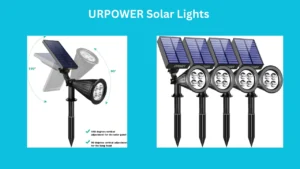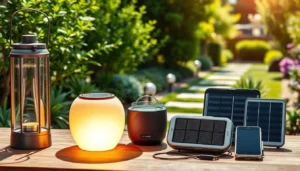1. Introduction: Why the MacBook Pro 16‑inch Stands Out
The MacBook Pro 16‑inch continues to be Apple’s flagship laptop offering, aimed squarely at professional users who need high performance, a large and color‑accurate display, and long battery life in a portable package. Apple designed the 16‑inch model to bridge the gap between desktop replacement power and mobile convenience, integrating the company’s custom silicon, premium build materials, and macOS optimizations.

- What makes the MacBook Pro 16‑inch Apple’s flagship laptop?
The combination of the largest available macOS laptop display, highest‑tier chips (M3 Pro and M3 Max variants in the 2025 lineup), expanded thermal capacity, and a focus on pro workflows (video editing, 3D rendering, software development) positions the 16‑inch model as Apple’s showcase device. It offers more GPU cores, more unified memory, larger battery, and better sustained performance than the smaller models. - Who should consider buying the MacBook Pro 16‑inch?
Professionals and creators who need raw compute (multi‑core CPU and high‑core GPU workloads), large color‑accurate screens (photo/video editors, colorists, motion designers), and long battery life. Also useful for developers compiling large codebases and for audio engineers who want many simultaneous tracks. Casual users and buyers prioritizing ultra‑light portability should generally look to smaller models.

2. Design and Build Quality
Apple continues its consistent design language: aluminum unibody, slim bezels, and precise machining.
- How premium is the MacBook Pro 16‑inch design?
Very premium. The chassis uses precision‑milled aluminum, a refined hinge, and a glass trackpad. The finish, fit and finish, and tactile experience match Apple’s high standards. The keyboard, speaker grilles, and thermal vents are integrated cleanly. The design balances aesthetics and thermals well. - Is the 16‑inch size too big for portability?
It depends on the user’s priorities. The 16‑inch is larger than 13–14‑inch models, so it’s bulkier in smaller backpacks and tighter workspaces. For users who travel frequently by air and value ultra‑light carry, the 14‑inch or a MacBook Air may be better. For those who prioritize screen real estate and power while remaining reasonably portable, the 16‑inch hits a strong balance. - How heavy is it compared to other laptops?
The 16‑inch weighs more than the 14‑inch MacBook Pro and most thin ultrabooks, though Apple keeps it surprisingly light for the class. Compared to large Windows laptops (17‑inch desktop replacements or gaming rigs), the 16‑inch is still competitive and usually lighter. Expect a noticeable difference when switching from a 13‑inch laptop, but many professionals accept the modest weight increase for the benefits it brings.
3. Display Quality
Apple’s 16‑inch panels have been headline features. In 2025 the 16‑inch Liquid Retina XDR remains a flagship display.
- How good is the 16‑inch Liquid Retina XDR display?
Excellent. It delivers high peak brightness for HDR content, deep blacks via local dimming, wide P3 color gamut, and excellent color accuracy out of the box. Contrast and dynamic range are strong for HDR video and photo work. For reference, professionals will value the consistent calibration, P3 coverage, and high brightness for reviewing HDR timelines. - Does ProMotion (120Hz) make a difference on a larger screen?
Yes. ProMotion improves perceived smoothness for scrolling, UI animations, and compatible applications. For creative work, a variable refresh rate can make timeline scrubbing and interactions feel more responsive. The benefit is less about raw productivity numbers and more about comfort and fluidity during long editing or design sessions. - Is the 16‑inch display the best for video editors and designers?
It’s among the best laptop displays available. For color‑critical work, the 16‑inch is often preferred over smaller laptops due to its larger canvas and XDR capabilities. However, some professionals still prefer external reference monitors for final grading and client review because desktop color‑grading monitors can offer higher certified color accuracy, larger gamut coverage, and hardware calibration workflows.
4. Performance and Hardware
The 2025 16‑inch MacBook Pro equipped with M3 Pro or M3 Max represents Apple’s most powerful mobile silicon offerings.
- How powerful is the MacBook Pro 16‑inch with M3 Pro and M3 Max?
Extremely powerful for a laptop. The M3 Pro provides strong multi‑core CPU performance and solid GPU throughput for typical professional tasks. The M3 Max pushes this further with substantially more GPU cores, higher memory bandwidth, and support for larger unified memory configurations. For many workloads, the 16‑inch M3 Max approaches or matches the performance of entry‑level desktop workstations, particularly in optimized apps that leverage Apple silicon and Metal acceleration. - Can it handle 4K/8K video editing, 3D rendering, and coding?
Yes. The M3 Max model is particularly well‑suited for heavy 4K and even 8K editing, complex timelines with many layers, and real‑time color grading in Final Cut Pro and other optimized apps. 3D rendering workflows benefit from the high GPU core counts and memory bandwidth, though extremely large scene renders may still find benefit from higher‑end desktop GPUs or network rendering. For coding, the machine compiles large projects quickly and can handle virtualization, container workloads, and local servers well. - Is the MacBook Pro 16‑inch overkill for regular users?
For typical web browsing, office apps, streaming, and light photo editing, yes—the power of M3 Pro/Max is more than necessary. Regular users will gain little practical benefit from the top configurations and can save money with smaller MacBooks or MacBook Air.
5. Battery Life and Charging
Battery life is a major strength of Apple silicon and the larger 16‑inch chassis allows for a larger battery.
- How long does the battery last on the MacBook Pro 16‑inch?
Real‑world battery life varies by configuration and workload. For light tasks (web browsing, document editing, video playback), you can expect long runtimes—often exceeding a full workday and sometimes approaching 15+ hours in ideal conditions. Under heavy sustained loads (rendering, encoding), battery life drops accordingly, but sustained performance on battery tends to be good compared to Intel‑based predecessors. - Does it support fast charging with MagSafe?
Yes. The modern MacBook Pro 16‑inch supports MagSafe charging and Apple has offered higher‑wattage power adapters which enable relatively fast charging. MagSafe ensures a secure magnetic connection and allows charging while still providing USB‑C/Thunderbolt ports for accessories. - Is the battery performance better than the 14‑inch model?
Generally yes, because the 16‑inch has a larger battery capacity. Real‑world performance depends on the chip and configuration; a heavily specced M3 Max with many GPU cores may consume more power under load than a lower‑spec 14‑inch, but for typical mixed usage the 16‑inch often yields longer runtimes due to its larger battery.
6. Keyboard, Trackpad, and Ports
Apple’s input devices and I/O have stabilized around a pro‑oriented set.
- Is the typing experience comfortable on the 16‑inch?
Yes. The full‑size keyboard layout is comfortable for long typing sessions; key travel and stability are refined compared to older butterfly mechanisms. The larger deck provides slightly more spacing and palm rest area than smaller models. - Does it have enough ports for professionals?
Apple has returned to a more pro‑friendly port selection: multiple Thunderbolt/USB‑C ports, an HDMI port, an SD card slot, and MagSafe charging in recent iterations. This selection meets the needs of many photographers (SD card), videographers (HDMI), and creative professionals without relying exclusively on dongles. - Is MagSafe charging more convenient than USB‑C?
For most users, yes. MagSafe’s magnetic connection reduces the risk of accidental drops when a cable is tripped, and leaves Thunderbolt ports free for peripherals. It’s a convenience and safety improvement; however, USB‑C remains ubiquitous for cross‑platform peripherals and power delivery.
7. Audio and Camera Quality
Audio and camera improvements have been consistent across MacBook Pro generations.
- How good are the speakers on the MacBook Pro 16‑inch?
Very good. The 16‑inch offers a wide stereo image, strong bass for a laptop, and high peak loudness without distortion. Dolby Atmos support and spatial audio features improve the immersive experience for multimedia creators and consumers. - Does the larger body improve sound quality?
In general, yes. The larger chassis allows for bigger speaker enclosures and better resonance control, which improves low‑end response and stereo separation compared to smaller laptops. - Is the 1080p FaceTime HD camera sharp enough for professionals?
A 1080p camera is adequate for most video conferencing needs and provides respectable clarity. For high‑end content creation or broadcast‑quality streams, professionals will often use external cameras. The built‑in camera is more than sufficient for client calls, interviews, and remote meetings.
8. macOS Experience
macOS is tightly integrated with Apple silicon and optimized for the hardware.
- How does macOS run on the MacBook Pro 16‑inch?
Smoothly and efficiently. macOS benefits from the unified memory architecture of Apple silicon, fast SSDs, and hardware accelerators. Apps optimized for Apple silicon (Final Cut Pro, Logic Pro, Xcode) run exceptionally well. System responsiveness, wake times, and battery management are strengths of the platform. - Does the larger display enhance multitasking?
Yes. The 16‑inch provides more screen real estate for split‑view workflows, multiple windows, and complex timelines. Developers, designers, and editors can view timelines, asset browsers, and preview windows simultaneously with less need for external displays. - Is macOS better than Windows for productivity and creativity?
“Better” depends on the user and workflow. macOS offers a cohesive ecosystem, optimized creative apps, and excellent integration with other Apple devices. Many creatives prefer macOS for software like Final Cut Pro and Logic Pro. Windows still excels for broader hardware choices, gaming, and certain engineering or specialized software that is Windows‑only. For those whose primary apps are macOS native or have Apple‑optimized versions, macOS often provides a smoother experience.

9. Pricing and Value for Money
Pricing varies by region and configuration; the 16‑inch is a premium product.
- How much does the MacBook Pro 16‑inch cost in 2025?
Exact pricing changes by configuration and region. Historically, the base 16‑inch MacBook Pro starts at a premium price point, and adding higher tier M3 Pro/Max chips, increased unified memory, and larger SSDs significantly raises the total. Buyers should compare configurations carefully against their real workload needs. (Note: for the latest prices and best deals, check authorized Apple resellers and major retailers like Amazon.) - Is the base model good enough, or should you upgrade?
The base model is attractive for many professionals but may be limiting for heavy GPU or memory‑intensive tasks. Upgrading unified memory and GPU cores benefits video editors, 3D artists, and developers working on large datasets. If budgets allow and workloads demand, upgrading CPU/GPU and memory provides tangible returns in performance and longevity. - Is the 16‑inch worth it compared to the 14‑inch?
If you need the larger screen, longer battery, and higher sustained performance, yes. The 14‑inch is more portable and often offers similar core architecture at lower price points, making it a better fit for many. The decision comes down to screen size preference, thermal headroom, and whether the added performance and battery life justify the premium.
10. Pros and Cons
Pros ✅
- Stunning 16‑inch XDR display: Excellent brightness, contrast, and color accuracy.
- Excellent speakers and audio quality: Wide stereo image and good low end for a laptop.
- M3 Max offers desktop‑class performance: Great for professional workloads.
- Long battery life: Especially for light to moderate tasks.
Cons ❌
- Expensive: High cost for top configurations.
- Heavier and less portable: Less convenient for ultra‑light travelers.
- Overpowered for casual users: Many buyers won’t use the full potential.
11. Best Alternatives to MacBook Pro 16‑inch
- Dell XPS 17 — Windows alternative with a large 17‑inch display, powerful Intel/AMD CPU options, and NVIDIA GPUs; strong for those who need Windows workflows.
- Razer Blade 16 — A high‑performance Windows laptop aimed at gaming and creator markets with powerful discrete GPUs and compact design.
- ASUS ROG Zephyrus Duo — Innovative dual‑screen laptops for creators and power users who want extra screen real estate in a single chassis.
- Is the MacBook Pro 16‑inch still the best for creators in 2025?
For creators deeply invested in Apple’s ecosystem and whose software is optimized for Apple silicon (Final Cut Pro, Logic Pro, many Adobe apps with native Apple silicon builds), the 16‑inch MacBook Pro remains among the top choices. For creators who rely on Windows‑only tools or need specific NVIDIA GPU features, a high‑end Windows laptop may be more appropriate.
12. Final Verdict
- Who should buy the MacBook Pro 16‑inch?
Professionals who need sustained high performance, a large color‑accurate display, and long battery life: video editors, motion designers, 3D artists, audio engineers, and developers with heavy workloads. Also those who prefer macOS and the Apple ecosystem. - Is it the ultimate laptop for professionals?
It is one of the most complete and polished laptops for professional content creators and power users in 2025. It balances performance, battery life, display quality, and build quality better than most competitors for macOS‑centric workflows. - Is it future‑proof for the next 5 years?
For many professionals, yes—especially if you opt for a higher‑memory M3 Max configuration. Apple silicon’s performance and efficiency, combined with higher unified memory and SSD capacity, should extend the useful life. However, absolute future‑proofing depends on evolving software requirements and the possibility of new hardware transitions; heavy users who need absolute top performance years from now may still consider periodic upgrades.
Also read….
Apple MacBook Air M1 vs M2 — A Detailed Comparison




